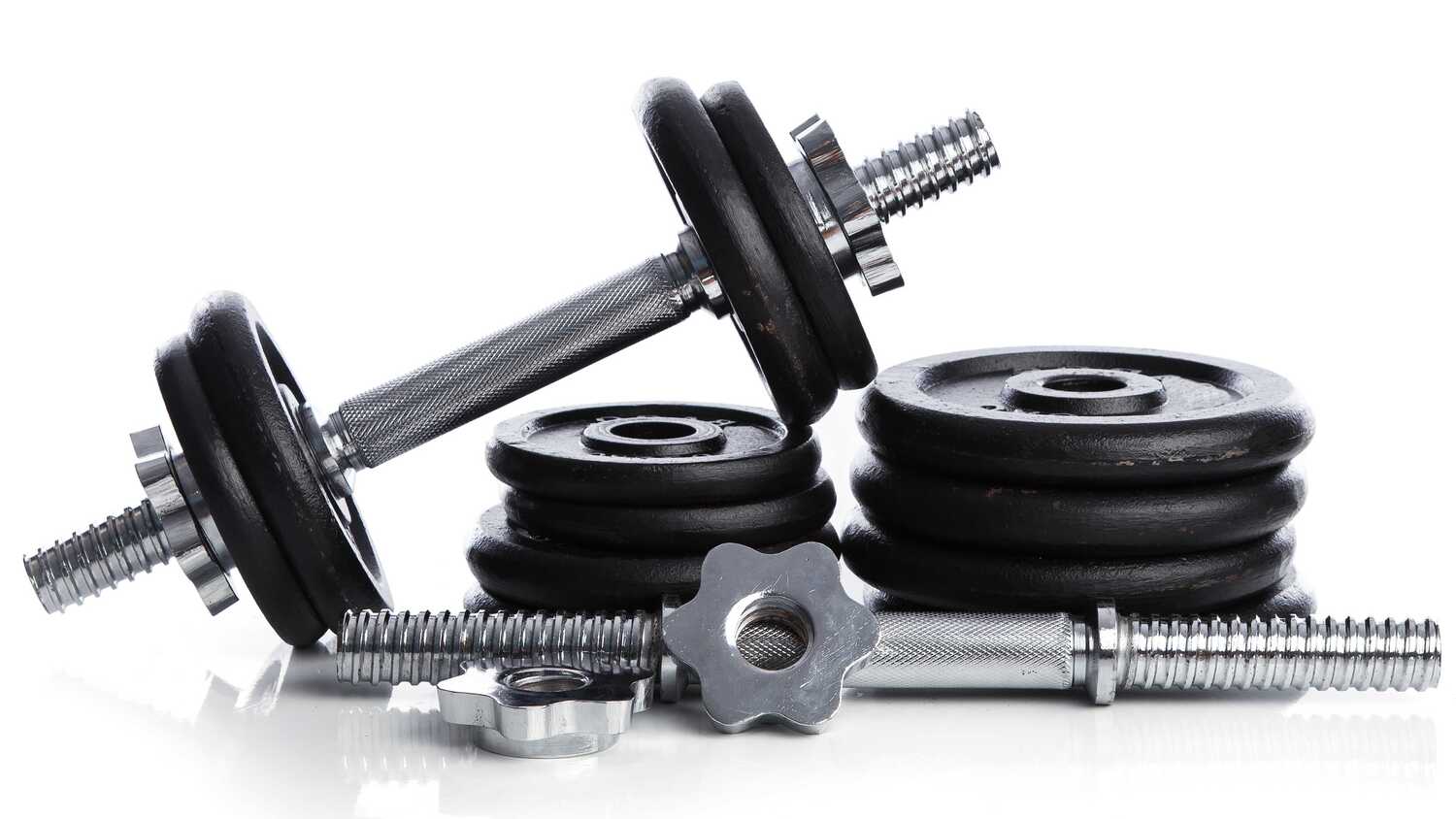- John DiBella
- Published: May 22, 2024
- Fact-checked by Dr. Desiree Granados

Whether you’re a novice stepping into the gym for the first time or a seasoned lifter looking to fine-tune your routine, understanding the key components of a well-rounded weight training program is crucial. In this article, we’ll delve into the essential elements that make up a successful regimen, from setting clear goals and selecting the right exercises to ensuring proper recovery and nutrition.
How Can I Start Weight Training?
Starting weight training may seem intimidating, but it can be broken down into manageable steps. First, it’s important to set clear, achievable goals. Determine what you wish to accomplish, whether it’s building muscle, increasing strength, or improving overall fitness. Next, consider consulting a fitness professional to create a tailored workout plan and ensure you learn proper technique.
Begin with basic compound exercises that target multiple muscle groups, such as squats, deadlifts, and bench presses. These exercises lay a solid foundation for strength and muscle development. Prioritize mastering the correct form to prevent injuries and maximize effectiveness. Start with lighter weights and gradually increase the load as you become more comfortable and confident.
Incorporate a warm-up routine to prepare your muscles and joints for each workout. Consistency is key, so aim to train regularly and allow time for rest and recovery between sessions. Lastly, track your progress and adjust your program as needed to continuously challenge your body.
What Are the Elements of an Effective Weight Training Program?
An effective weight training program is built upon several key elements, including:
- Proper Form and Technique: Ensure each exercise is performed with the correct form to maximize efficiency and prevent injuries.
- Variety: Incorporate different exercises to target various muscle groups, avoid plateaus, and ensure balanced muscle development.
- Progressive Overload: Gradually increase the weight and/or number of repetitions in your strength training routine to continue making muscle gains.
- Rest and Recovery: Allow adequate time between workouts for muscle repair and growth, which is crucial for muscle gains and overall performance.
- Personalization: Tailor your program to suit your fitness goals, abilities, and limitations.
- Nutrition: Eat a balanced diet rich in protein, vitamins, and minerals to fuel your workouts and promote muscle recovery.
- Consistency: Maintain a regular workout schedule to build and sustain muscle strength over time.

How Many Times a Week Should You Lift Weights?
The ideal frequency for lifting weights depends on various factors, including your fitness goals, experience level, and overall health. Beginners typically benefit from lifting two to three times a week, which allows for adequate recovery and muscle growth. Intermediate and advanced lifters can increase their frequency to four to six times a week and use split routines to target different muscle groups on different days.
Regardless of your experience level, it’s crucial to listen to your body and get adequate rest to prevent overtraining and injury.
How Often Should I Do Cardio if I Lift Weights?
Experts recommend 150 minutes of moderate-intensity aerobic exercise per week, but the frequency at which you should do cardio if you lift weights will depend on your fitness goals. For those looking to build muscle mass, it’s generally recommended that you limit yourself to two or three cardio sessions per week. This will ensure that you are not burning too many calories that could otherwise be used to support muscle growth.
On the other hand, if you want to improve your cardiovascular health or maintain a lean physique, incorporating cardio more frequently–say three to five times per week–can be beneficial. It’s crucial to strike a balance so that your cardio workouts don’t overtax your muscles, which can hinder your performance in weightlifting sessions.
What Should You Eat While Weight Training?
A well-balanced diet is crucial for those engaging in weight training, as it supports muscle growth and repair, as well as energy levels. The elements of a good weight-training diet include:
Protein
Protein is essential for muscle growth and repair. Sources of high-quality protein include lean meats like chicken, turkey, and fish, as well as plant-based options such as beans, lentils, and tofu. Aim for a protein intake of about 1.2 to 2.0 grams per kilogram of body weight per day, depending on your training intensity and goals.
Carbohydrates
Carbohydrates are the primary source of energy for your workouts. Complex carbohydrates like whole grains, fruits, and vegetables should make up a significant portion of your diet. These provide sustained energy and help replenish glycogen stores in muscles, which is crucial for recovery and performance.
Fats
Healthy fats are important for hormone production, including testosterone, which plays a role in muscle development. Include sources of healthy fats in your diet, such as avocados, nuts, seeds, and olive oil, and limit your saturated and trans fats.
Hydration
Don’t forget the importance of staying hydrated. Water plays a vital role in maintaining muscle function and overall performance. Consider consuming electrolytes if you train intensely or in a hot environment.
Timing
The timing of your nutrient intake can also make a difference. Consuming protein and carbohydrates within two hours of your workouts can help you maximize muscle protein synthesis and replenish your energy stores. Spread your protein intake evenly throughout the day to support consistent muscle recovery and growth.
How Long Does it Take to See Weight Training Results?
The time it takes to see results from weight training can vary depending on several factors, including your starting fitness level, the intensity and frequency of your workouts, your diet, and your dedication to your regimen. Generally, with consistent effort and a well-structured program, you can start noticing improvements in muscle tone and strength within three to four weeks.
More significant changes in physique typically become evident after 8 to 12 weeks of consistent training. It’s important to remember that progress can be gradual, and maintaining a balanced diet alongside your exercise routine is crucial to achieving optimal results.
Conclusion
Weight training can be incredibly rewarding. The key to success lies in understanding and implementing the core elements of an effective program, including proper technique, variety, progressive overload, and adequate rest. Whether you’re a beginner or an experienced lifter, the principles outlined in this guide will help you achieve your fitness goals.
If you’re looking to take your weightlifting routine to the next level, the Sanctuary Wellness Institute can help. We can connect you with an online personal trainer who’ll develop a personalized exercise plan for you and meet with you regularly to guide you through workouts and provide motivation. In addition, if you’re seeking to lose weight while getting in shape, the Sanctuary offers an online medical weight loss program. Book a free consultation today to learn more.
How we reviewed this article:
- James Roland (2024). A Beginner’s Guide to Weight Training
https://www.healthline.com/health/how-to-start-lifting-weights - Pat Swancutt (2017). 10 Essential Components of Strength Training
https://ptforhealth.com/10-essential-components-strength-training/ - Tiffany Ayuda (2023). How Much Strength Training Is Too Much? We Asked the Pros
https://www.onepeloton.com/blog/can-you-lift-weights-every-day/ - Cleveland Clinic (2023). How Often Should You Work Out?
https://health.clevelandclinic.org/how-often-you-should-work-out - Paul Rogers (2022). How You Should Eat for Weight Training
https://www.verywellfit.com/meal-timing-for-weight-training-3498426 - Bronwyn Griffiths (2024). HOW LONG DOES IT TAKE TO SEE RESULTS FROM WORKING OUT?
https://www.polar.com/blog/how-long-to-see-results-from-working-out/
Current Version
May 22, 2024
Written By
Jake Peter
Fact-checked By
Dr. Desiree Granados
Editorial Process
Our Editorial Process
Other Posts About Personal Trainer
No posts found!

John DiBella is the co-founder and CEO at The Sanctuary Wellness Institute. His goal is to foster healthier lifestyles to improve individuals’ quality of life and health span through online medical and non-medical services. When he’s not writing health & wellness articles for The Sanctuary, he enjoys hiking, camping, surfing and sailing.

